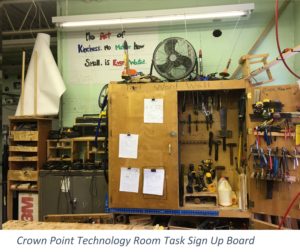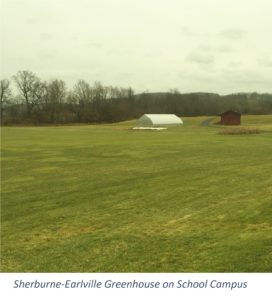Spotlighting Cultural Responsiveness in Rural Positive Outlier Schools
by Aaron Leo & Kristen C. Wilcox
Culturally Responsive Education in Rural Schools
The last several decades have seen a growing recognition of the value of culturally responsive education (CRE) alongside research that has documented its effectiveness in addressing disparities in opportunities among youth of color in U.S. schools. As discussed in a previous NYKids blog, culturally responsive pedagogies draw on the cultural resources of students, their families, and communities and are adapted to their needs.
While cultural responsiveness has generally been viewed through an ethnic and racial lens and focused on urban school contexts, a growing body of research on rural schools, including prior NYKids rural school studies indicate that young people growing up in rural communities also benefit from approaches that are responsive to their own cultural resources and needs.
Since nearly one out of every five students in the United States attends a rural school, and many of these students face a host of unique challenges which CRE has the potential to mitigate, NYKids dug into the rural school literature. What we found:
1) Students from rural high schools are less likely than their urban and suburban counterparts to immediately enroll in college and return for their second year and also attend less selective institutions.
2) Rural areas have experienced rising levels of substance abuse and mental health issues in the last several decades while their economies have been strained due to a combination of deindustrialization, an eroding agricultural sector, and outmigration which weakens the tax base upon which rural schools rely. Such developments are reflected in the high rates of poverty in rural areas which can persist for generations and harm the long-term educational prospects of children.
3) Despite these challenges, rural areas are characterized by a range of resources including close connections within their communities, a strong sense of belonging, and relatively high levels of parental involvement to support educators’ efforts. These strengths can be built upon by educators using culturally responsive approaches.
Spotlighting Cultural Responsive Strategies in Rural Positive Outlier Schools
NYKids identified a number of culturally responsive strategies positive outlier rural school leaders and educators used to engage students and draw on the assets in their communities.
- Educators draw on students’ prior knowledge and interests
 Case in point #1: As a Crown Point teacher explained, “I work a lot with prior knowledge, and I’m trying to show the kids that before we talk about anything, they already know the answer to the question.” In student interviews at Crown Point, several explained how their interest in careers in science and technology has been kindled by a new hands-on Engineering program called “New Visions” which pairs students with local businesses.
Case in point #1: As a Crown Point teacher explained, “I work a lot with prior knowledge, and I’m trying to show the kids that before we talk about anything, they already know the answer to the question.” In student interviews at Crown Point, several explained how their interest in careers in science and technology has been kindled by a new hands-on Engineering program called “New Visions” which pairs students with local businesses.
- Educators adapt course offerings and create opportunities that reflect students’ and community members’ interests and local needs
Case in point #2: Educators at Sherburne-Earlville also work to develop engaging opportunities in and outside of the classroom. For instance, in responding to calls by students and families, educators revitalized the Agricultural Science program to reflect their agricultural history and constructed a greenhouse and maple syrup shack on school grounds for hands-on learning. “We’re constantly adjusting our course offerings to meet those needs to what they’re interested in,” said the principal.
- Educators recognize that mental health, substance abuse, and poverty are serious concerns in their communities and seek to address these issues by forging partnerships with community members, local businesses, and community agencies

Case in point #3: Programs at both schools are available to distribute food, school supplies, and hygiene products each week to families in need and often involve coordination with local businesses and county agencies. As a teacher from Crown Point explained, “We look out for the people who don’t have the opportunities others [do].”
How culturally responsive do students in rural schools feel their experiences in high school are? NYKids is pursuing this question in our most recent study with findings coming soon. In the meantime, see other blogs on the positive outlier schools highlighted here as well as check out case studies of these schools on our resources page. Like us on NYKids Facebook and Twitter and reach out to us at nykids@albany.edu for more NY specific research.
